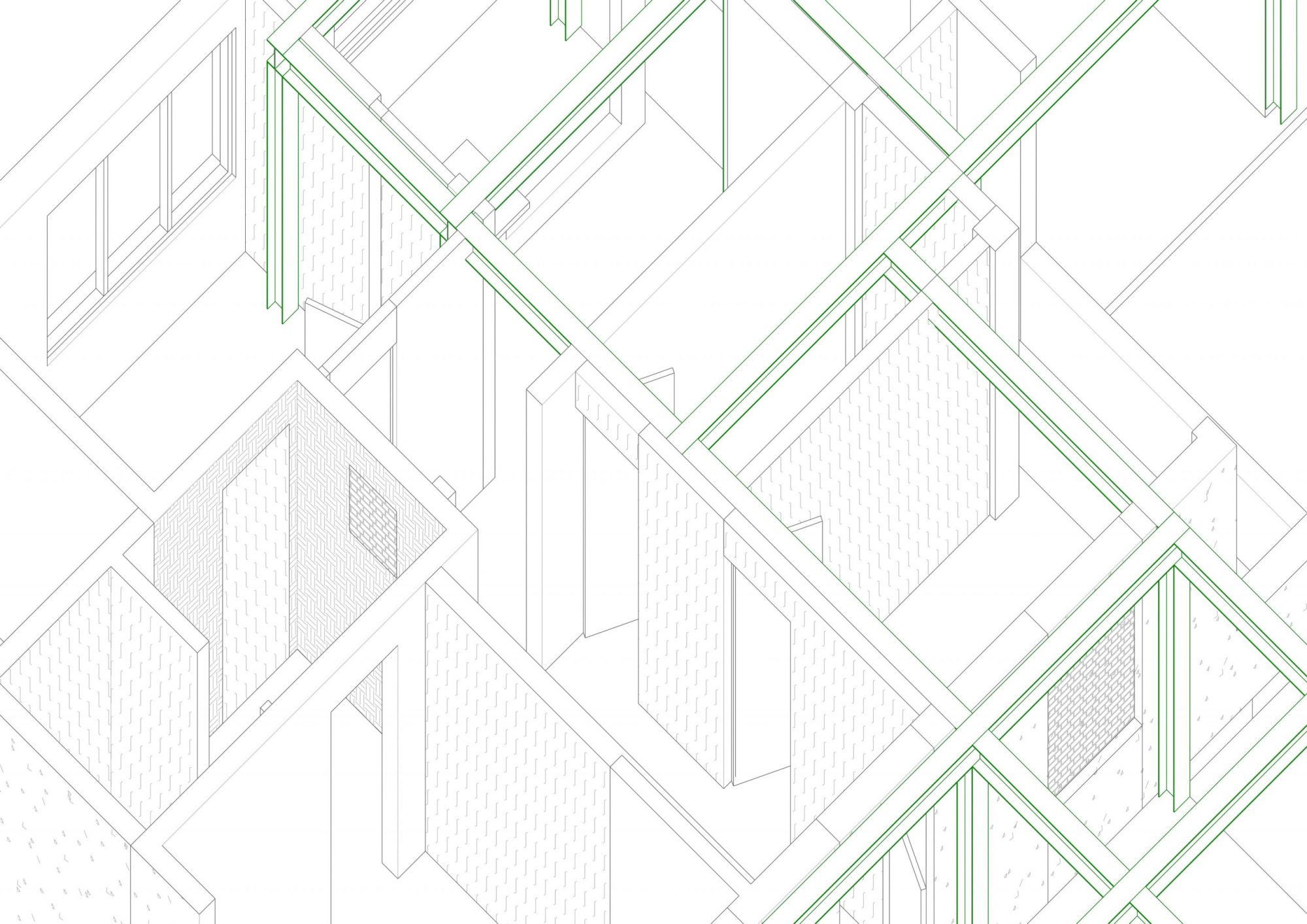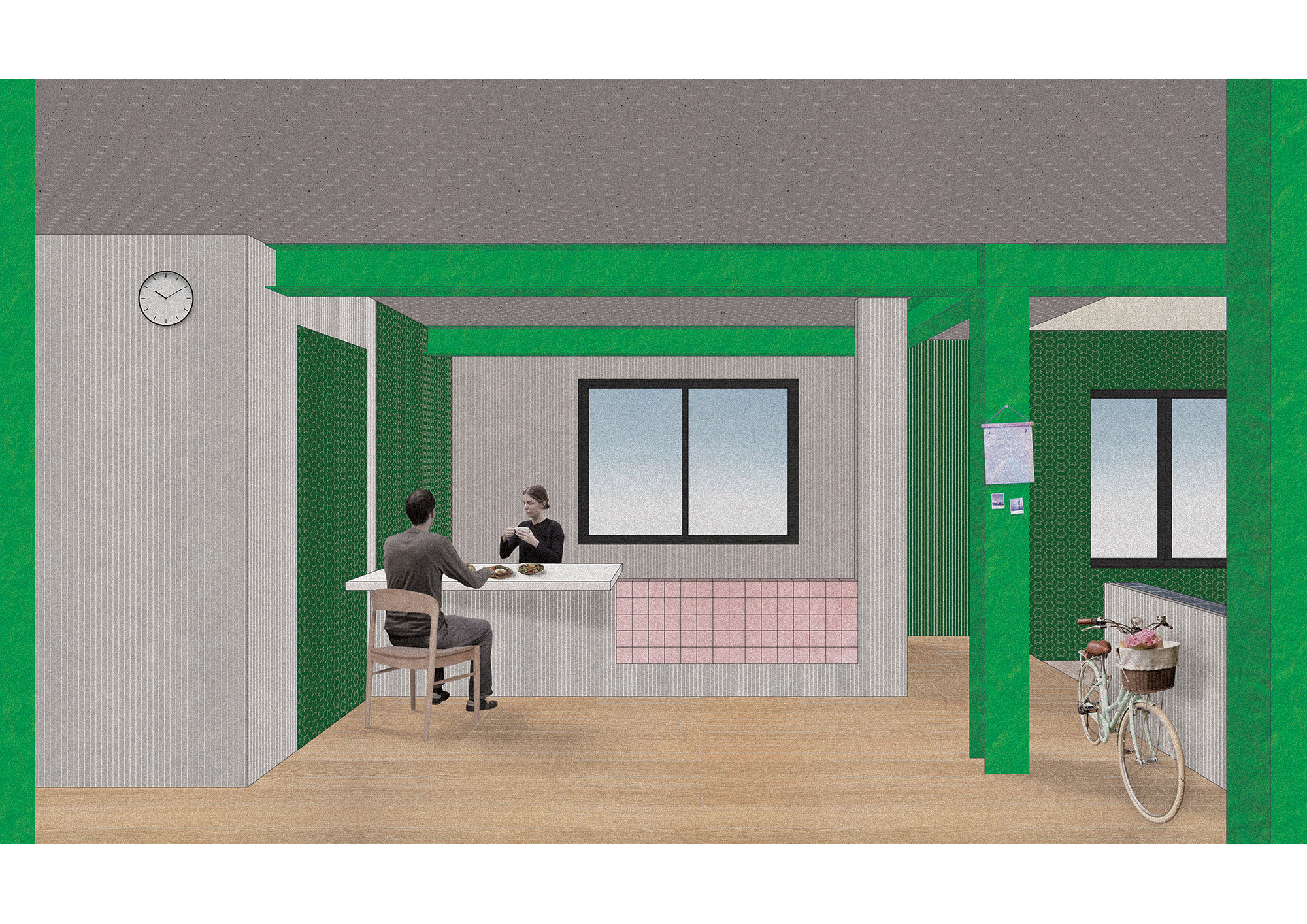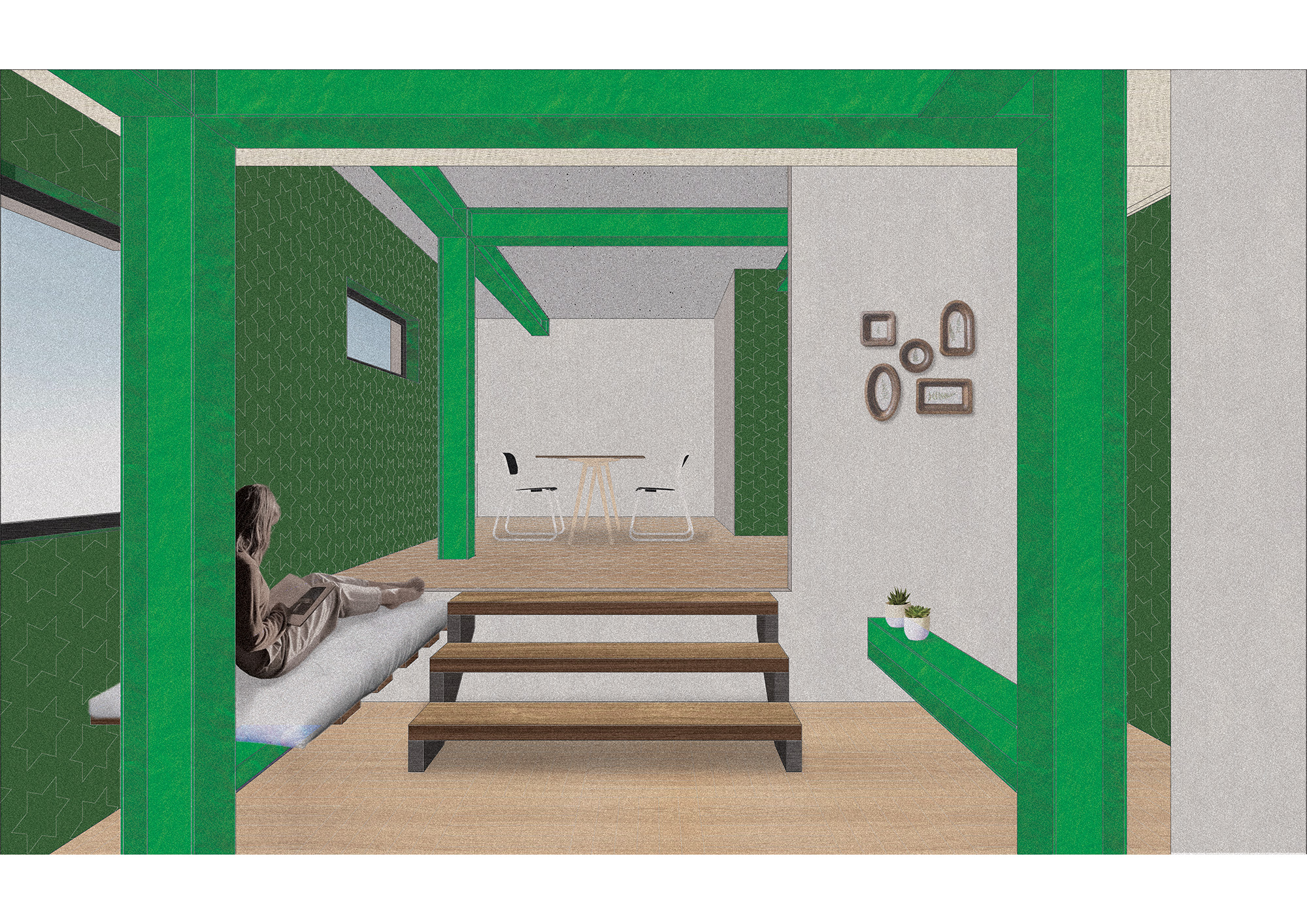신재욱 _ 덧집
거실 중심의 위계를 갖는 평면이 ‘집’의 전형으로 자리 잡았다.
다세대 주택은 서울의 인구가 팽창하던 시기, 획일화된 평면으로 보급되어 우리의 삶의 방식을 집단적으로 규정짓고 주거에 대한 개인의 취향을 반영하기 어렵게 만들었다.
세월이 지나면 대규모의 재개발 또는 개별 필지의 재건축을 통해 파괴된 후 다시 쓰이기를 반복하곤 한다. 하지만 이들은 이미 도시에 만연해 있고 일상적인 존재가 되었다. 누군가에게는 못나고, 뒤틀리고, 조악하다고 여겨질 건물들이 이미 도시의 특성이자 일상적 풍경으로 자리 잡았다. 눈을 질끈 감아도 피할 수 없다. 긍정하진 않더라도, 적어도 외면하진 않아야 한다.
그렇다면 존재하던 맥락을 보다 존중하는 방식으로 주거에 변화를 줄 수는 없을까?이 변화 속에서 다양한 삶의 방식이 혼재하기를 기대할 수는 없을까?
기존 건물들은 개별 필지 내에서 각자의 논리에 따라 세워진 것으로 필연적으로 복잡성을 띤다. 이 복잡성을 다양한 삶의 방식을 수용하기에 적절한 맥락으로 받아들인다. 관점을 바꾸어 오직 기존의 것을 활용함으로써 얻을 수 있는 가능성을 찾는다.
프로젝트는 서대문구 북가좌동의 다세대 주택지 한 블록을 대상지로 한다. 소규모 도심하천에 면하는 입면을 통해 도시에 반응하고 있으며 주변의 대규모 아파트 재개발지와 대비를 이룬다.
한 블록 내부의 건물을 집합적으로 다룸으로써 개별 필지가 갖던 제약으로 부터 벗어난다. 기존 건물을 일부 헐어내 만든 중정은 공용공간으로 인식되는 영역을 확장시켜 적층된 단독주택을 진정한 집합주거로 탈바꿈시킨다. 이 과정에서 덜어낸 볼륨은 건물의 틈새공간으로 재배치된다. 주어진 상황으로부터 다양한 가구유형과 평면유형을 만들어낸다. 기존 환경에 새로운 요소가 개입함으로써 일어나는 초현실적인 충돌을 즐긴다.
일반적인 다세대 주택을 활용하고 변형하는 실험을 하고자 한다. 대규모 개발과 개별필지 개발의 중간지점에서 점진적인 개입을 통해 주거를 다루는 다른 방향을 제시해 본다.
At some point, the living room-centered floor plan became the archetype of ‘home’.
Widespread multi-family housing, which proliferated during Seoul’s population boom, was supplied in standardized layouts, collectively shaping our ways of living and making it difficult to reflect individual preferences in residential spaces.
Over time, these buildings are repeatedly demolished and rebuilt, either through large-scale redevelopment or the reconstruction on individual lots. Yet, they have become a pervasive and everyday presence in the city. Buildings that some may consider unsightly, awkward, or crude have already become characteristic features and familiar scenes in the urban landscape. Even if we do not embrace them, we cannot avoid them—at the very least, we should not turn a blind eye.
So, is it possible to introduce changes to housing in a way that respects the existing context? Can we hope for a coexistence of diverse ways of living within this transformation?
Existing buildings, constructed according to the logic of each individual lot, inevitably possess a certain complexity. We embrace this complexity as an appropriate context for accommodating diverse lifestyles. By shifting our perspective, I seek out possibilities that can only be realized by utilizing what already exists.
This project focuses on a block of multi-family housing in Bukgajwa-dong, Seodaemun-gu. The site responds to the city through its facade facing a small urban stream and stands in contrast to the nearby large-scale apartment redevelopment zones.
By collectively addressing the buildings within a single block, we break free from the constraints of individual lots. Courtyards created by partially removing existing structures expand the realm of communal spaces, transforming stacked single-family homes into genuine collective housing. The subtracted volumes are redistributed as interstitial spaces within the buildings. From the given conditions, generate a variety of unit types and floor plans. Delight in the surreal collisions that arise when new elements intervene in the existing environment.
This is an experiment in utilizing and transforming typical multi-family housing. Positioned between large-scale development and individual lot development, I propose an alternative approach to housing through gradual interventions.















